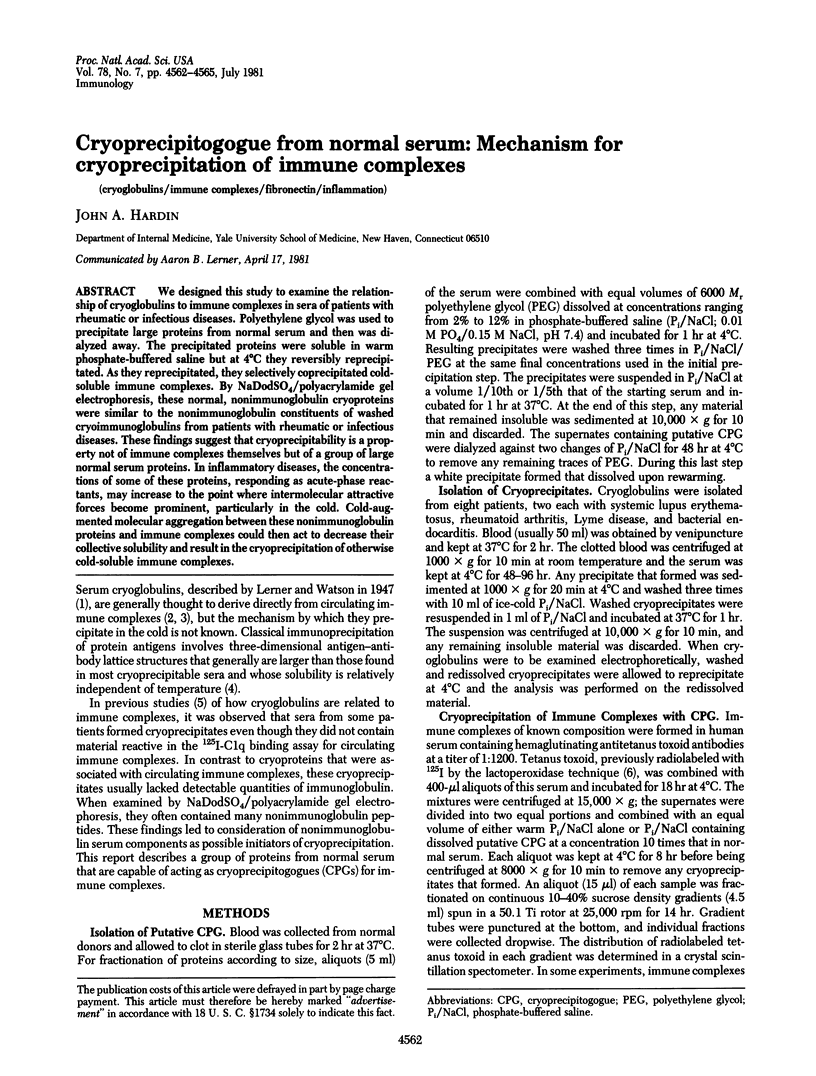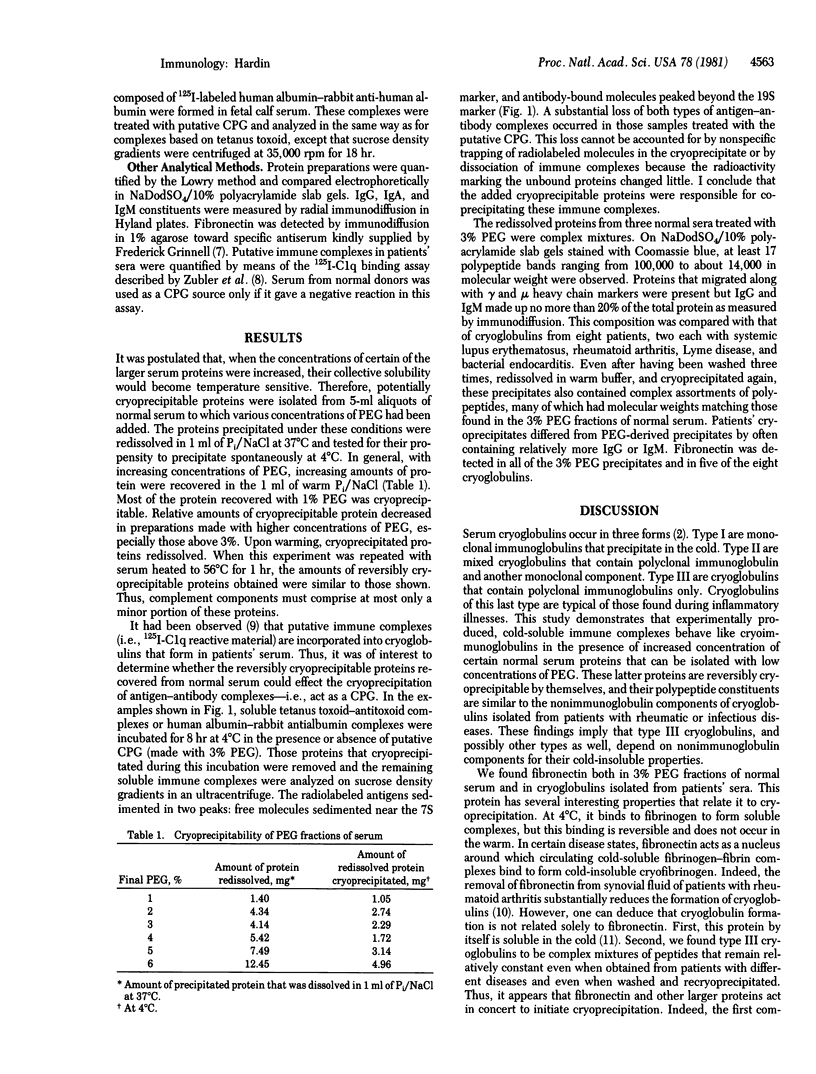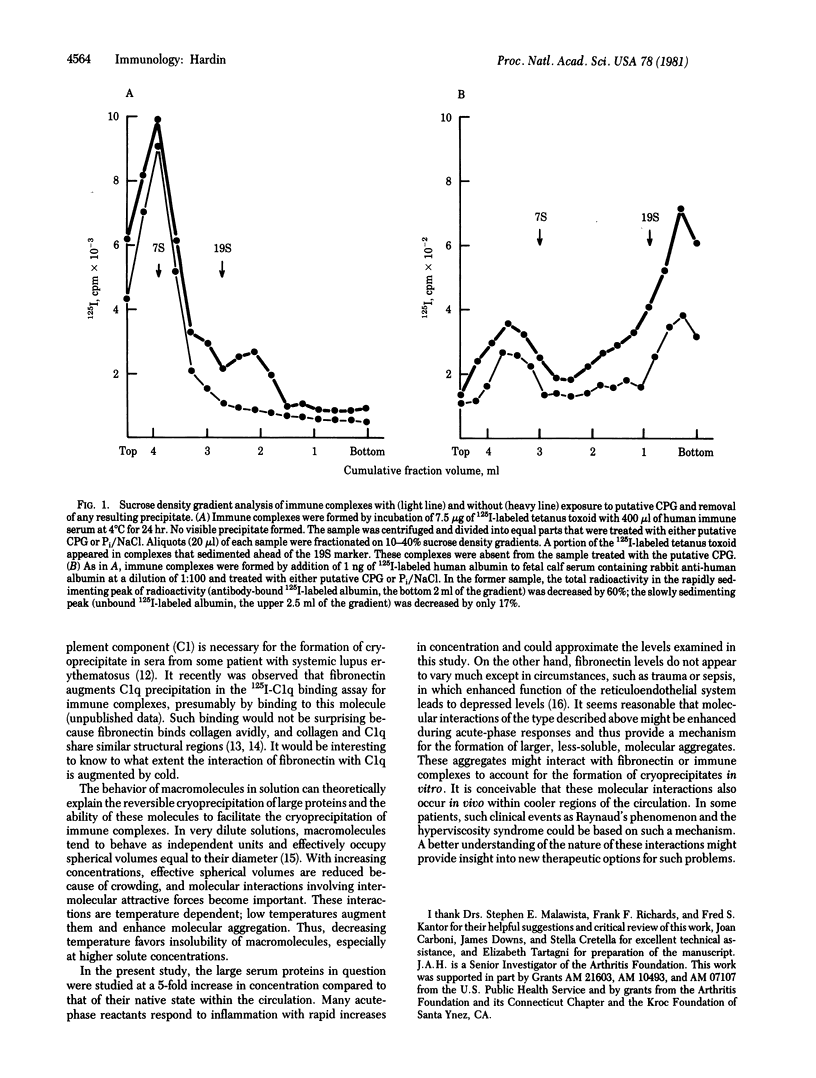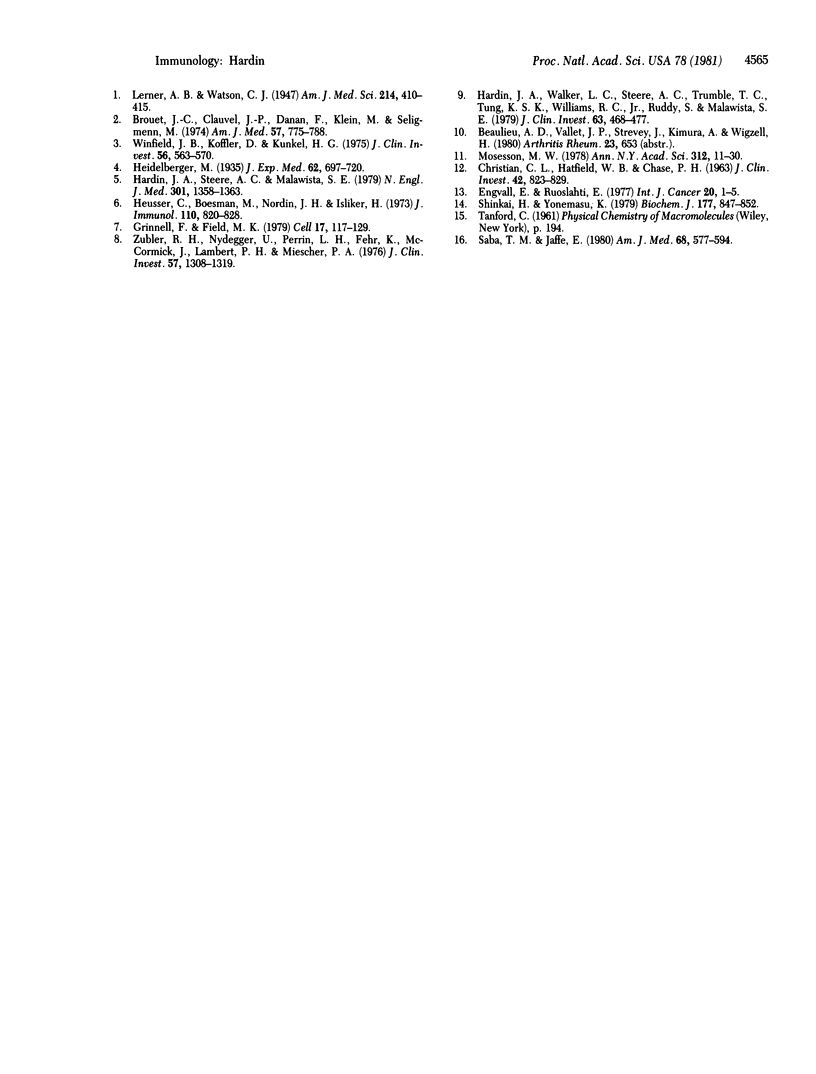Abstract
We designed this study to examine the relationship of cryoglobulins to immune complexes in sera of patients with rheumatic or infectious diseases. Polyethylene glycol was used to precipitate large proteins from normal serum and then was dialyzed away. The precipitated proteins were soluble in warm phosphate-buffered saline but at 4 degrees C they reversibly reprecipitated. As they reprecipitated, they selectively coprecipitated cold-soluble immune complexes. By NaDodSO4/polyacrylamide gel electrophoresis, these normal, nonimmunoglobulin cryoproteins were similar to the nonimmunoglobulin constituents of washed cryoimmunoglobulins from patients with rheumatic or infectious diseases. These findings suggest that cryoprecipitability is a property not of immune complexes themselves but of a group of large normal serum proteins. In inflammatory diseases, the concentrations of some of these proteins, responding as acute-phase reactants, may increase to the point where intermolecular attractive forces become prominent, particularly in the cold. Cold-augmented molecular aggregation between these nonimmunoglobulin proteins and immune complexes could then act to decrease their collective solubility and result in the cryoprecipitation of otherwise cold-soluble immune complexes.
Full text
PDF



Selected References
These references are in PubMed. This may not be the complete list of references from this article.
- Brouet J. C., Clauvel J. P., Danon F., Klein M., Seligmann M. Biologic and clinical significance of cryoglobulins. A report of 86 cases. Am J Med. 1974 Nov;57(5):775–788. doi: 10.1016/0002-9343(74)90852-3. [DOI] [PubMed] [Google Scholar]
- CHRISTIAN C. L., HATFIELD W. B., CHASE P. H. Systemic lupus erythematosus. Cryoprecipitation of sera. J Clin Invest. 1963 Jun;42:823–829. doi: 10.1172/JCI104774. [DOI] [PMC free article] [PubMed] [Google Scholar]
- Engvall E., Ruoslahti E. Binding of soluble form of fibroblast surface protein, fibronectin, to collagen. Int J Cancer. 1977 Jul 15;20(1):1–5. doi: 10.1002/ijc.2910200102. [DOI] [PubMed] [Google Scholar]
- Grinnell F., Feld M. K. Initial adhesion of human fibroblasts in serum-free medium: possible role of secreted fibronectin. Cell. 1979 May;17(1):117–129. doi: 10.1016/0092-8674(79)90300-3. [DOI] [PubMed] [Google Scholar]
- Hardin J. A., Steere A. C., Malawista S. E. Immune complexes and the evolution of Lyme arthritis. Dissemination and localization of abnormal C1q binding activity. N Engl J Med. 1979 Dec 20;301(25):1358–1363. doi: 10.1056/NEJM197912203012502. [DOI] [PubMed] [Google Scholar]
- Hardin J. A., Walker L. C., Steere A. C., Trumble T. C., Tung K. S., Williams R. C., Jr, Ruddy S., Malawista S. E. Circulating immune complexes in Lyme arthritis. Detection by the 125I-C1q binding, C1q solid phase, and Raji cell assays. J Clin Invest. 1979 Mar;63(3):468–477. doi: 10.1172/JCI109324. [DOI] [PMC free article] [PubMed] [Google Scholar]
- Heusser C., Boesman M., Nordin J. H., Isliker H. Effect of chemical and enzymatic radioiodination on in vitro human Clq activities. J Immunol. 1973 Mar;110(3):820–828. [PubMed] [Google Scholar]
- Saba T. M., Jaffe E. Plasma fibronectin (opsonic glycoprotein): its synthesis by vascular endothelial cells and role in cardiopulmonary integrity after trauma as related to reticuloendothelial function. Am J Med. 1980 Apr;68(4):577–594. doi: 10.1016/0002-9343(80)90310-1. [DOI] [PubMed] [Google Scholar]
- Shinkai H., Yonemasu K. Hydroxylysine-linked glycosides of human complement subcomponent C1q and various collagens. Biochem J. 1979 Mar 1;177(3):847–852. doi: 10.1042/bj1770847. [DOI] [PMC free article] [PubMed] [Google Scholar]
- Winfield J. B., Koffler D., Kunkel H. G. Specific concentration of polynucleotide immune complexes in the cryoprecipitates of patients with systemic lupus erythematosus. J Clin Invest. 1975 Sep;56(3):563–570. doi: 10.1172/JCI108125. [DOI] [PMC free article] [PubMed] [Google Scholar]
- Zubler R. H., Nydegger U., Perrin L. H., Fehr K., McCormick J., Lambert P. H., Miescher P. A. Circulating and intra-articular immune complexes in patients with rheumatoid arthritis. Correlation of 125I-Clq binding activity with clinical and biological features of the disease. J Clin Invest. 1976 May;57(5):1308–1319. doi: 10.1172/JCI108399. [DOI] [PMC free article] [PubMed] [Google Scholar]


